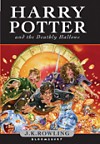
You wouldn’t think that writing up a few random thoughts in a blog could get anyone into trouble, would you? Obviously, if you’re making libelous statements then some day soon you are going to be sued, allegedly. But, most of us are sensible enough not to slander anyone in print, in person, or online, aren’t we?
No, the issue to which I am alluding to is the case where you, as a blogger, overhear some juicy gossip, perhaps not all the details, but enough to make you respond strongly enough that you want to tell the world. You do a short write-up, expressing your opinions about the turn of events as you heard them, you mention no one by name, make no direct connections to the place or time of the happening, and do all this in a personal blog.
Next thing you hear, someone connected with the gossip has made the connection, found out where you work and emailed a serious complaint, cc’ing your boss. The complaint alludes to an abuse of privacy laws, trust, and customer-client confidentiality. You panic, confess all to your boss, a meeting is called with the bosses and HR and before you know what’s hit you, you’re fired.
There have been several instances of medical professionals and others being barred from writing blogs recently. There is usually a serious conflict of interest between the public discussion of medical matters and the confidentiality inherent in the Hippocratic Oath. It’s the same when professionals present case studies in their trade publications, particularly if they mention any two of the following, portable vacuum cleaners, potatoes, genitals, the rectum, or hot-tubs, in the same sentence.
Seriously though, what can you, as a compulsive blogger, do to minimise the risk of employment cessation? Here are my top tips, which you can take or leave, but which do not represent secure advice in the legal sense but merely some common sense thoughts.
First off, decide whether the benefits of blogging and the risks it might entail actually outweigh the benefits of gainful employment. I suspect 99 times out of 100 they won’t, unless you’ve optimised your ads really, really well.
Second, double check your employment contract and any professional oaths you take to make sure there is no conflict of interest or that you are not automatically precluded from revealing your inner thoughts to the public.
Third, do not under any circumstances use your employer’s computing equipment, services, web connection, email, telephone or anything else for personal use and particularly not in relation to your blog, unless you have explicit permission. Even then, be very cautious of blogging from a work IP. They could string you up on a technicality if you even used the phone once to call your grandmother. In fact, they could fire you for all kinds of reasons on this one whether you’re blog breaks the rules or not.
Fourth, ensure your blog is entirely personally run, owned, and in no way tied to your employer. (Also see item 3 in this regard).
Fifth, make sure that what you are saying is legal and does not defame anyone, it’s a basic rule of journalism, and if bloggers are staking a claim on that realm, then they ought to learn the rules, for their own safety.
Finally, a bonus tip. Go back to point one and decide whether running a blog to vent off steam is really a better outlet than a trip to the pub with friends where you can ruminate to your heart’s content with (usually) no fear of losing your job. Ask yourself, does my blog shed a good light on me as a professional or my employer as the entity paying my bills?
In a recent report from American Medical News, some physician-bloggers have found that what they wrote could be used against them. That doesn’t mean you have to stop, or never start, says the report. But, people do get sacked for running blogs and saying the wrong thing, at the wrong time.
Incidentally, this post is NOT autobiographical. I didn’t. Honest. But, I’m not going to embarrass the blogger who did get fired this week, having essentially failed to adhere to those safe blogging rules.
Meanwhile, more public cases of blog firings that show this is nothing new. Read ’em and weep:
When Blogging Gets Risky
Blogging Blunders Could Lead To Pink Slip
US Blogger Fired by Her Airline
I Was Just Fired for Blogging
Of Blogging and Unemployment
5 Reasons Blogging Leads to the Unemployment Line (You’re Fired!) – Adds, the caveat that you must sure you’re not late for work or slacking cos you’re blogging.
Be warned though, not blogging can get you fired too!
And, it’s not just blogging that could get you into trouble, your boss could “own” your Facebook, MySpace, Twitter, Pownce, etc accounts if you even mentioned running one at work, under your contract of employment. Just as a research chemist who invents a new life-saving drug, attempts to take out a patent in their own name will most likely discover that anything they produce while employed will defer to the intellectual property of their employer. Unless their contract contains a get out clause or an IP sharing paragraph, they will not profit from their invention even if they did it in a home lab.
The same might apply to your StumbleUpon account, your Digg page, your del.icio.us bookmarks, and links you share with others using the Share This plugin displayed below.





